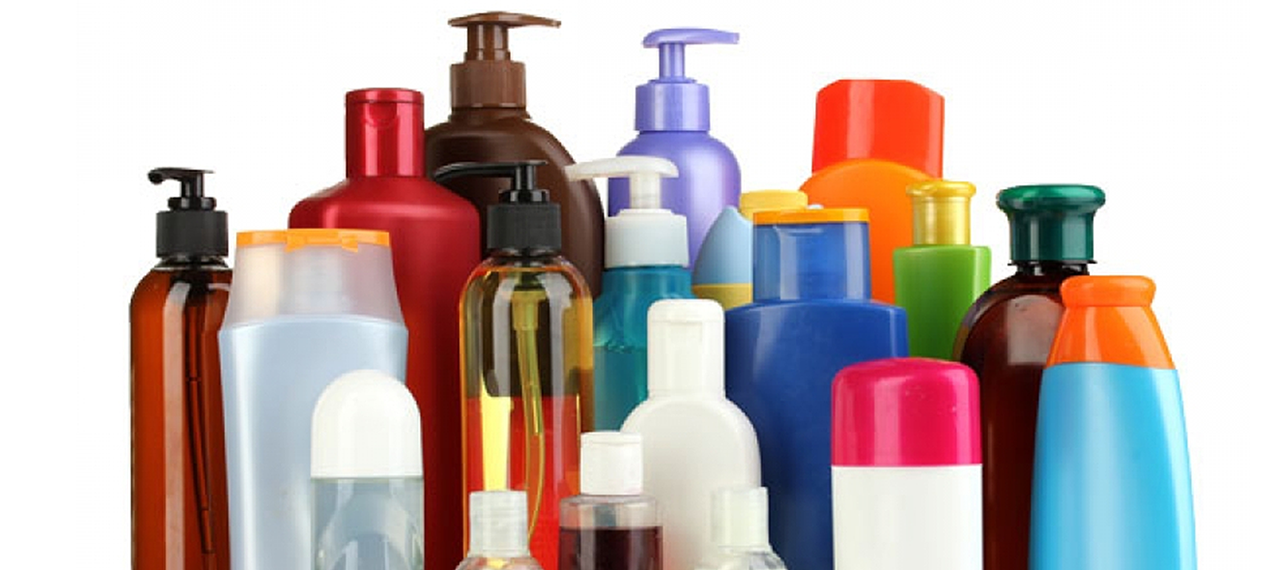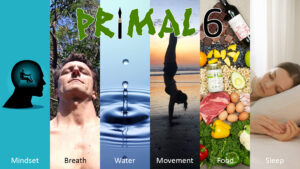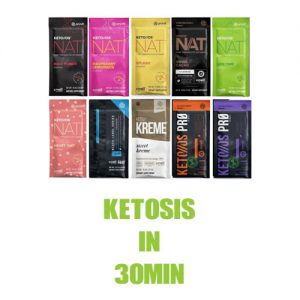There’s already huge awareness of the importance of eating nutritious, chemical-free primal foods, but have you ever considered what your skin is eating each day? It is a medically recognised fact that our body absorbs significant amounts (about 60%) of what we put on our skin. A great example of skin absorption is in nicotine patches which release nicotine into the bloodstream through a sticker on the skin. Or think about how lotion or creme disappears as it is rubbed into your skin. It doesn’t just disappear – it is absorbed into your body’s system. Also, doesn’t it send off alarm bells that the side of your toothpaste has a warning against swallowing it? Why would you put anything in your mouth, and especially your child’s mouth, that is toxic to swallow? If we are protecting our body by choosing healthy, organic foods, shouldn’t we be doing the same with our body care, hair care, toiletries and cosmetics?
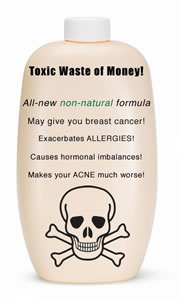
Toxic Body Care Product
Pic from Mukti
Are Your Body Care Products Making You Sick?
Can you understand the ingredients in your shampoo, lotion, deodorant, toothpaste, soap, lip balm, and make-up? Do you know what they are doing to your health and vitality? It’s now becoming known that aluminium in deodorant can contribute to breast cancer, but what do you know about some other common body care ingredients?
Lanolin: The majority used in cosmetics is highly contaminated with chlorinated pesticides like DDT.
Parabens: Widely used even though known to be highly toxic. Have caused many allergic reactions and skin rashes.
Mineral Oil: Interferes with skin’s ability to eliminate toxins, slows down skin function and cell development, resulting in premature aging. Any mineral oil derivative can be contaminated with cancer causing Polycyclic Aromatic Hydrocarbons. Baby oil is 100% mineral oil! Paraffin Wax is also just Mineral Oil Wax. Used in many products.
Sodium Lauryl Sulfate: Causes eye irritations, skin rashes, hair loss, scalp scurf similar to dandruff, and allergic reactions. Animals exposed to SLS experience eye damage, central nervous system depression, laboured breathing, diarrhoea, severe skin irritation, and even death. Frequently disguised in pseudo-natural cosmetics with the explanation “comes from coconut.”
Propylene/Butylene Glycol: Because this penetrates the skin so quickly, the Environmental Protection Agency of the USA warns against skin contact to prevent things like brain, liver, and kidney abnormalities. But there isn’t even a warning label on products such as stick deodorants, where the concentration is greater than in most industrial applications.
Synthetic Colors: They will be labeled as FD&C or D&C, followed by a color and a number. Synthetic colors are believed to be cancer-causing agents.
Synthetic Fragrances: The synthetic fragrances used in cosmetics can have as many as 200 ingredients. There is no way to know what the chemicals are, since on the label it will simply say “Fragrance.” Some of the problems caused by these chemicals are headaches, dizziness, rash, hyperpigmentation, violent coughing, vomiting, skin irritation.
Familiarise yourself with more toxic ingredients using this comprehensive glossary.
Are Your Body Care Products Making You Fat?
It has been proven that these toxins are stored in your fat when the liver cannot process them. So if you take in more toxins than can be processed, your fat cells will have to increase in size! To learn the science behind these claims, visit this link: Chemical Toxins: A Hypothesis to Explain the Global Obesity Epidemic.
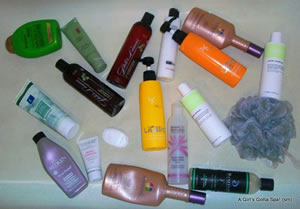
Do you really need all these toxic products?
Pic from agirlsgottaspa
Are There Safe Alternatives?
As consumers become more aware of the consequences of all these chemicals on their skin, the number of body care and cosmetic lines claiming to be all natural and organic has greatly increased. The challenge for consumers is to decide which ones are actually a safer choice. A product labelled “all-natural” gives no reassurance of safety, as many things toxic to the human body come from natural sources, such as mercury, arsenic, and some types of mushrooms. Organic, too, has unfortunately become little more than a marketing buzz-word. A product labelled organic may actually be the same chemical cocktail with the addition of just one organic ingredient.
Therefore, instead of being swayed by the slick marketing words on the front label, turn the product over and read the ingredients. As with food, this is the only way to actually know what you are putting on your body. Usually, the less ingredients, the better, and if you don’t know what any of the ingredients are, look them up! Take the time to find out what soap, shampoo and lotion can simply be made from and look for products with that similar ingredient list.
Another assurance that the ingredients will be safe is an official Certified Organic Label on the product. To have this label, companies must adhere to specific rules and regulations about what ingredients can be used in their products. For example, prohibited ingredients in certified organic body care products include, but are not limited to: Synthetic colouring agents, synthetic fragrances and perfumes, silicones, paraffin and other petroleum or petroleum derived products.
Our favourite brand is Miessence. They sell a wide variety of products certified organic to food standards, which means you can literally eat the products! Every ingredient in every product must be beneficial and chemical free to be included. We are a lot happier about having products like this around the house especially with an inquisitive toddler. Children’s immune systems are especially vulnerable and should not be slathered in toxic body care.
Remember guys, holistic health is about looking at the health of the body from all angles. Reducing toxicity, no matter how small and supposedly ‘safe’ these ingredients are in our food, air, water and skincare, is really important. My goal is to die from old age like the good old days! How about you?
Would You Eat Your Body Care Products? – February 2013

